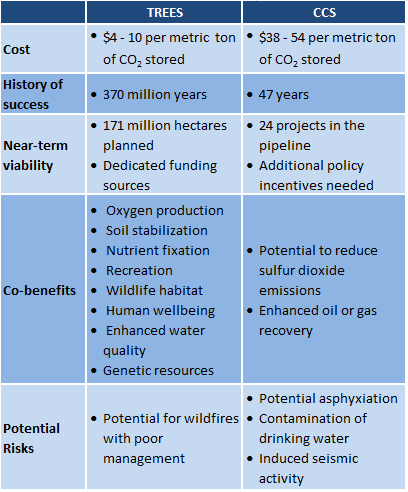Clients: Home Energy Efficiency Team (HEET) and Speak for the Trees (SFTT)
Authors: Bryndis Woods and Liz Stanton, PhD
November 2019
Researcher Bryndis Woods and Clinic Director and Senior Economist Liz Stanton, PhD prepared a policy brief that compares two cutting-edge carbon dioxide emission sequestration (or storage) technologies on the basis of cost, history of success, near-term commercial viability, co-benefits, and potential risks: 1) Carbon Capture and Storage (CCS), and 2) Technosilvicultural Reclamation for Environmental Emission Sequestration (TREES). Our assessment finds TREES facilities to be competitive with, or superior to, CCS in all evaluation categories: TREES facilities are less expensive per ton of CO2 stored, have a longer history of success, stronger near-term viability, more robust co-benefits, and fewer risks than CCS.

